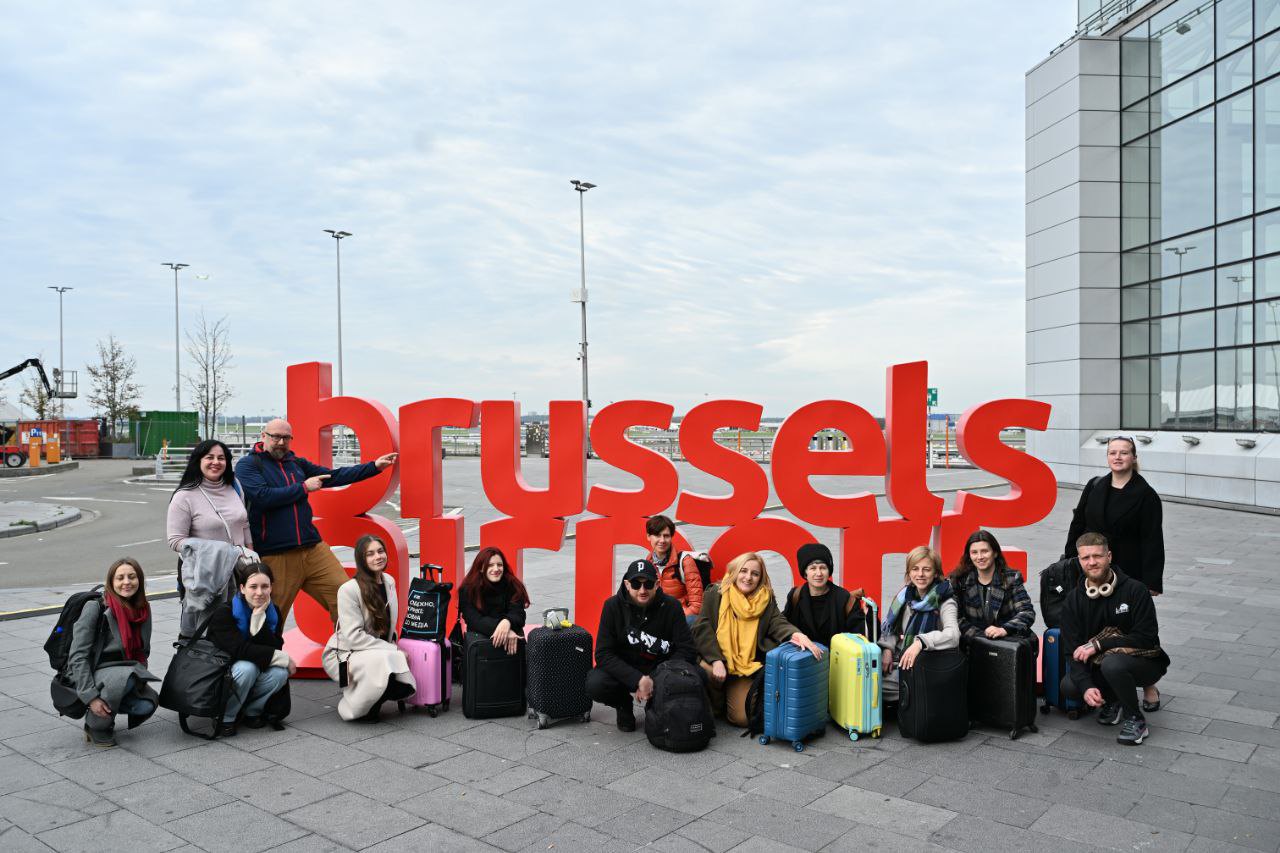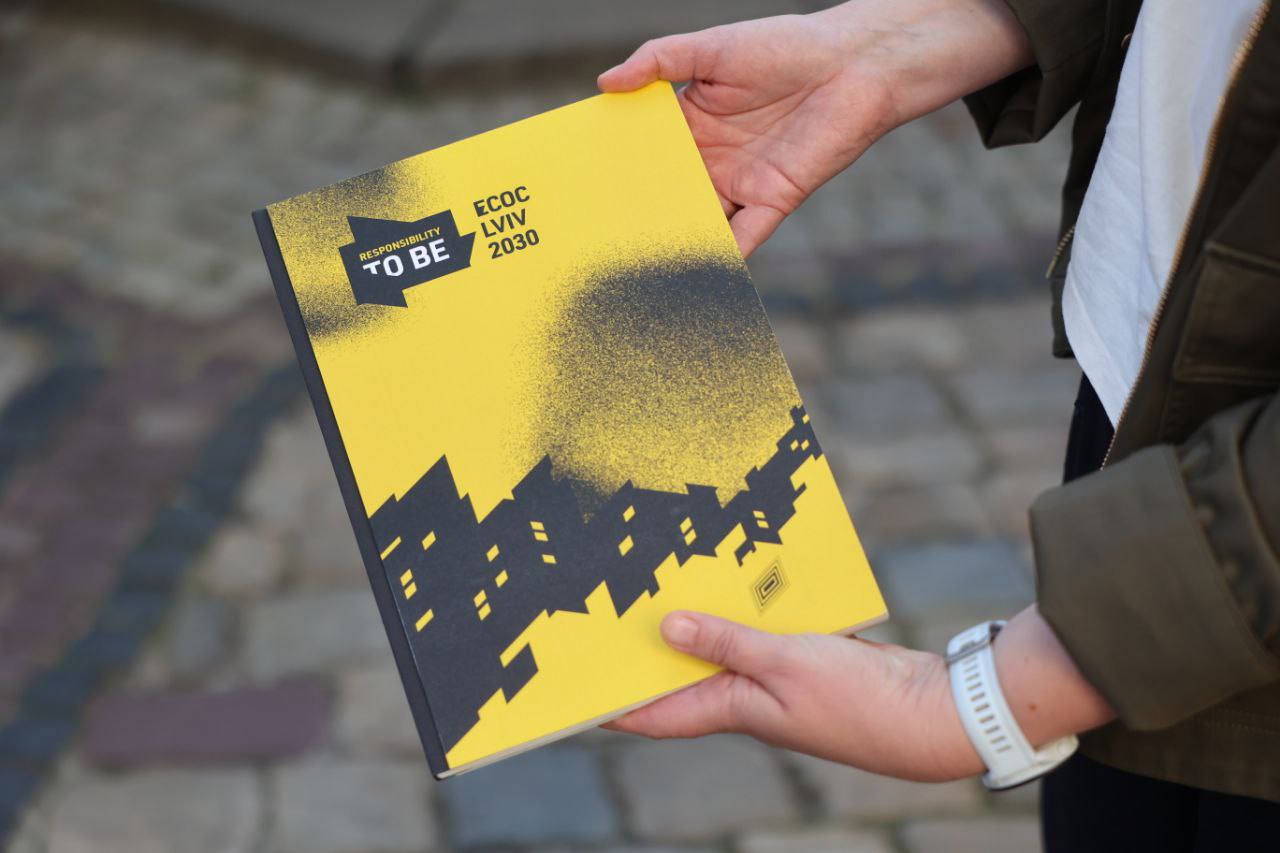
Lviv’s bid: Responsibility to Be
The concept behind Lviv’s application — Responsibility to Be — is set out in the so-called “yellow book,” which opens with an introduction from Mayor Andriy Sadovyy. In it, he reflects on the new role of Ukrainian culture as a refuge, a force of unity, and a form of testimony. The text is accompanied by illustrations by artist Alevtyna Kakhidze.
Dozens of experts from various fields contributed to the project, coordinated by the Institute for Cultural Strategy led by Yuliya Khomchyn. Specific areas were headed by Bohdan Shumylovych, researcher at the Centre for Urban History and artistic director of the programme; poet and musician Hryhoriy Semenchuk, who served as programme director; and America House Lviv director Volodymyr Byehlov, who oversaw audience engagement.
The total proposed budget amounts to €40 million, with 25 programmes in all. Let’s take a closer look at some of them.
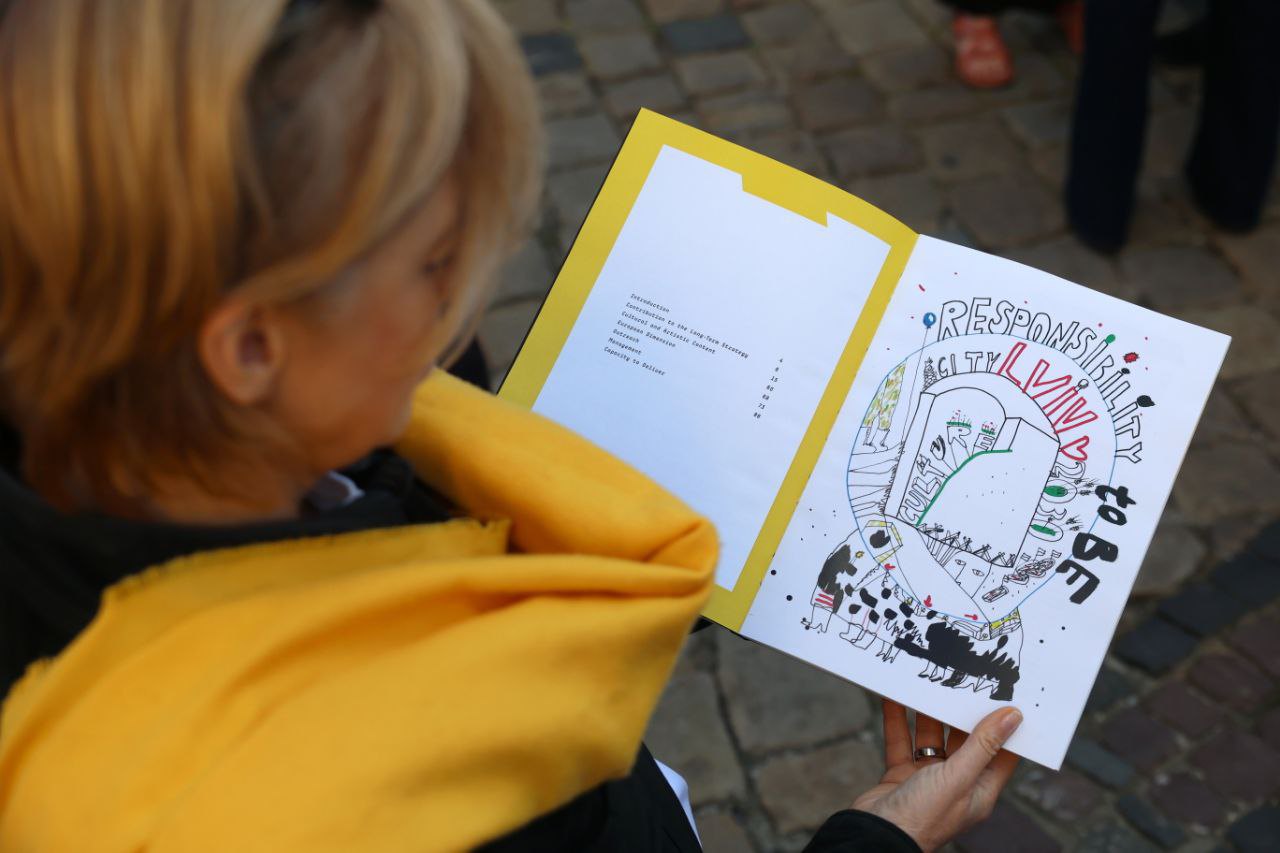
Response_Ability
A large-scale art project dedicated to protest art. Contemporary artists such as Anselm Kiefer, Ai Weiwei, Marina Abramović, Walid Raad, Pavlo Makov, Zhanna Kadyrova, and Alevtyna Kakhidze will engage in dialogue with works and ideas of artists who shaped this movement, including Karlo Zvirynskyy, Oleksa Novakivskyy, Leopold Levytskyy, Yakiv (Jacques) Hnizdovskyy, Alla Horska, Myroslav Yahoda, and Andriy Sahaydakovskyy.
The organisers plan to gather works by more than 150 artists across 12 exhibition venues — among them Jam Factory, Mercury Art Center, Zenyk Art Gallery, Ya Gallery, the Sheptytsky Museum, and the Voznytsky Gallery. Partners include the Stedelijk Museum Breda, Carnegie Hall, and the Milan Triennale.
According to the concept, 100 new artworks will be created specifically for this programme, alongside some 90 performances and public installations. The curators are Lviv artist Vlodko Kaufman and Lithuanian curator Virginija Vitkiene, while other members of the curatorial team will be selected through an international open call.
Projected budget: €1.5 million.
Borderland 2030
A festival reimagining the idea of the European frontier. The main site is a stretch of preserved fortifications from the First World War located along the Ukrainian–Polish border.
The four-day event will span 45 hectares and 32 former fortifications, featuring 15 musical performances, 10 exhibitions, 20 land art installations, 10 film screenings, 4 performance spaces, and 4 theatrical productions — along with lectures and discussions.
Among the announced participants are Timothy Snyder, Anne Applebaum, Timothy Garton Ash, Karl Schlögel, Mayhill Fowler, Serhii Plokhy, Oksana Zabuzhko, Mstyslav Chernov, Pavlo Makov, Vlodko Kaufman, Kostyantyn Zorkin, the Open Group, Katya Buchatska, ONUKA, Opera Aperta, and Teatr Nafta.
Project partners include the Institute of the Frontier, PEN Ukraine, the Kharkiv Literary Museum, the Izolyatsia platform, and past European Capitals of Culture.
Projected budget: €1.5 million.
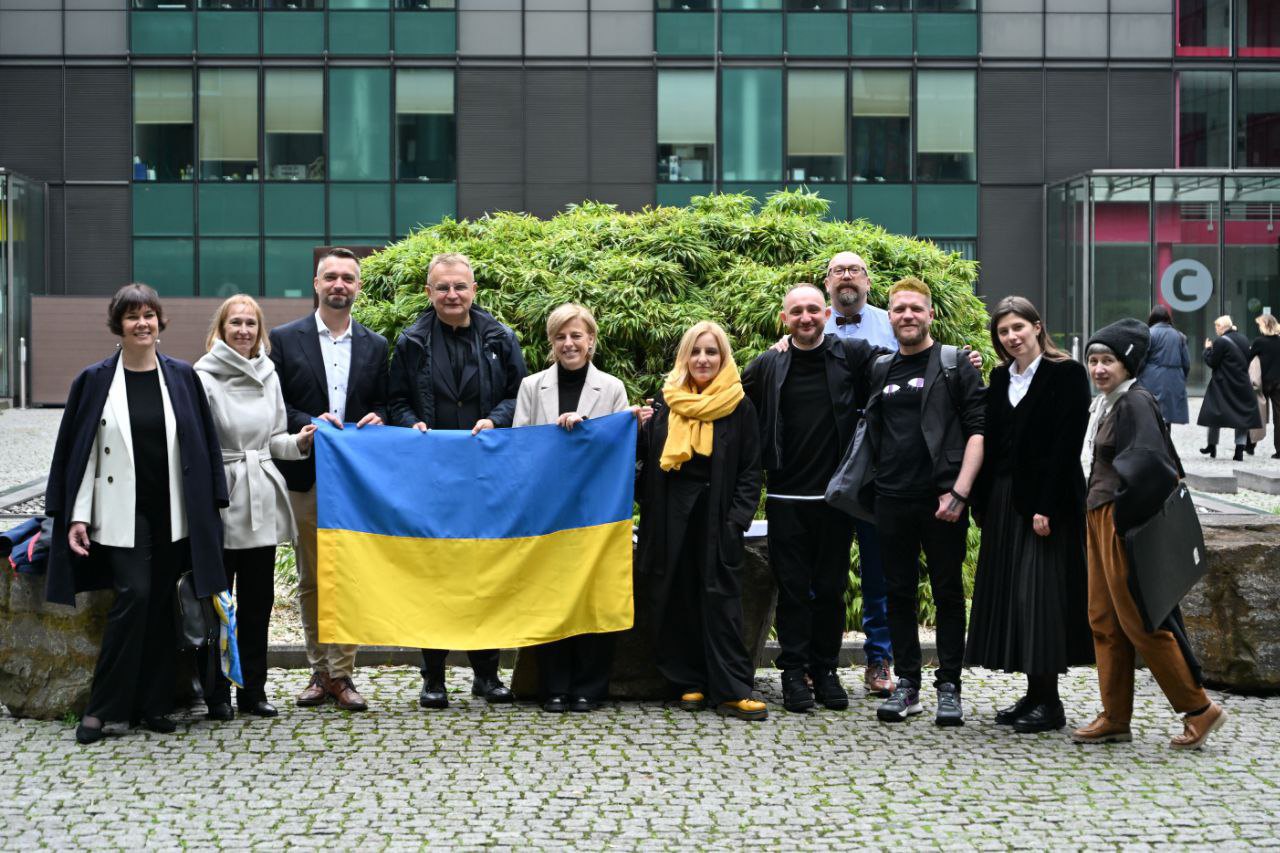
Android Opera
Can art exist beyond the human dimension? Starting from this question, Japanese composer Keiichiro Shibuya creates performances set in the operatic format — but radically different from traditional opera.
On the stage of the Lviv Opera House, an android named Vira will sing, controlled by artificial intelligence. Her voice and gestures will be generated in real time, drawing on diverse sources — Ukrainian poetry, philosophical reflections from across Europe, and testimonies of war crimes. The audience will also take part: viewers will be able to send words and phrases that will be incorporated into Vira’s arias. The tone of her voice and the stage visuals will respond to environmental data.
The project will involve AI research programmes from several universities — the Ukrainian Catholic University, Lviv Polytechnic, and the Massachusetts Institute of Technology.
Projected budget: €1 million.
Theatre Showcases
A biennial programme exploring contemporary theatre trends, organised by two Lviv-based theatres — Lesya Theatre and the Zankovetska Theatre.
The first biennale, planned for 2026, will feature Lviv theatres; the 2028 edition will include Ukrainian theatres; and the 2030 edition will bring together theatres from across Europe. Each premiere will be accompanied by an educational programme.
Among the participants are André Erlen, Milo Rau, Heidi Wiley, Tamara Trunova, Iryna Chuzhynova, Illya Razumeyko, and Veronika Sklyarova.
Projected budget: €1 million.
Archive of Urban Culture
A project to create an online database composed of four archives dedicated to Lviv’s urban culture. Two will focus on the city’s iconic 1990s art hubs — Dzyga and the Museum of Ideas — while the other two will document key figures such as Myroslav Yahoda and Yevhen Hulevych. Each archive will also be presented through a dedicated exhibition.
In addition, the project plans to produce guides on wartime archiving and urban memory policies. It will culminate in an international conference for 150 participants.
Partners include the Institute for Cultural Strategy (USA), the Hannah Arendt Institute (Belgium), Post Bellum (Ukraine, Czech Republic), Dzyga, the Center for Urban History, the platform Past / Future / Art, INDEX, HeMo, and the Lviv National Academy of Arts.
Projected budget: €0.9 million.
Streets of Names
A week-long programme dedicated to exploring and popularising urban history. It will involve five streets in Lviv and fifteen streets from EU cities — including Brno, Tartu, Helsinki, Bratislava, and Belfast — selected through an open call.
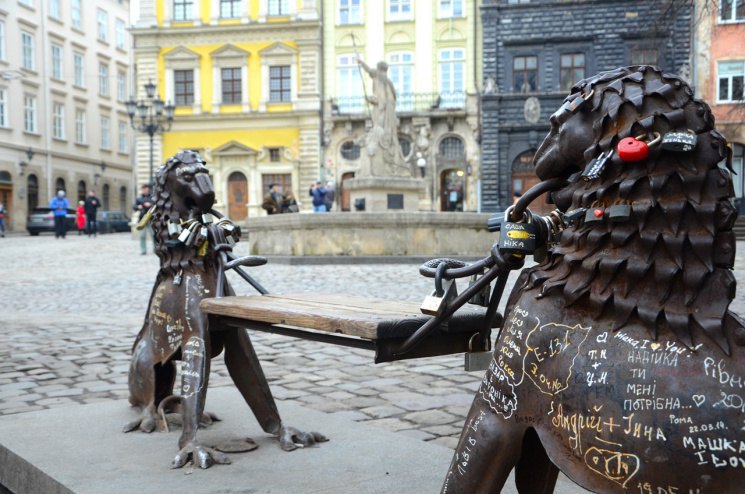
The programme plans to include interviews with local residents, open neighbourhood breakfasts, and curated walking tours. The collected stories and historical details about the streets will be displayed on public information boards and added to Wikipedia.
Partners of the programme will include city museums from all participating cities, the Lviv Tourism Office, and the Center for Urban History.
Projected budget: €0.7 million.
Lviv on Tourist Routes
This project aims to integrate Lviv into three official Cultural Routes of the Council of Europe.
The Jewish Heritage Route will feature 14 locations, including the Jewish Quarter, Yaniv Cemetery, the Monument to the Victims of the Lviv Ghetto, the synagogue in Zhovkva, and the Bruno Schulz Museum in Drohobych.
The European Cemeteries Route will include Lychakiv Cemetery.
The Camino de Santiago (Way of St James) route will feature 11 sites, such as the Garrison Church and the Memorial Complex of Heroes of Ukraine.
The project envisions creating barrier-free access to all locations, audio guides, new memorial installations, and two cycling routes connecting Lviv with Zhovkva, Velyki Mosty, and Zvenyhorod.
Partners include the State Agency for Tourism Development, the Consulate of Israel in Ukraine, Yad Vashem, the Lviv UNESCO Hub, and the Lviv Cycling Association, among others.
Projected budget: €0.7 million.
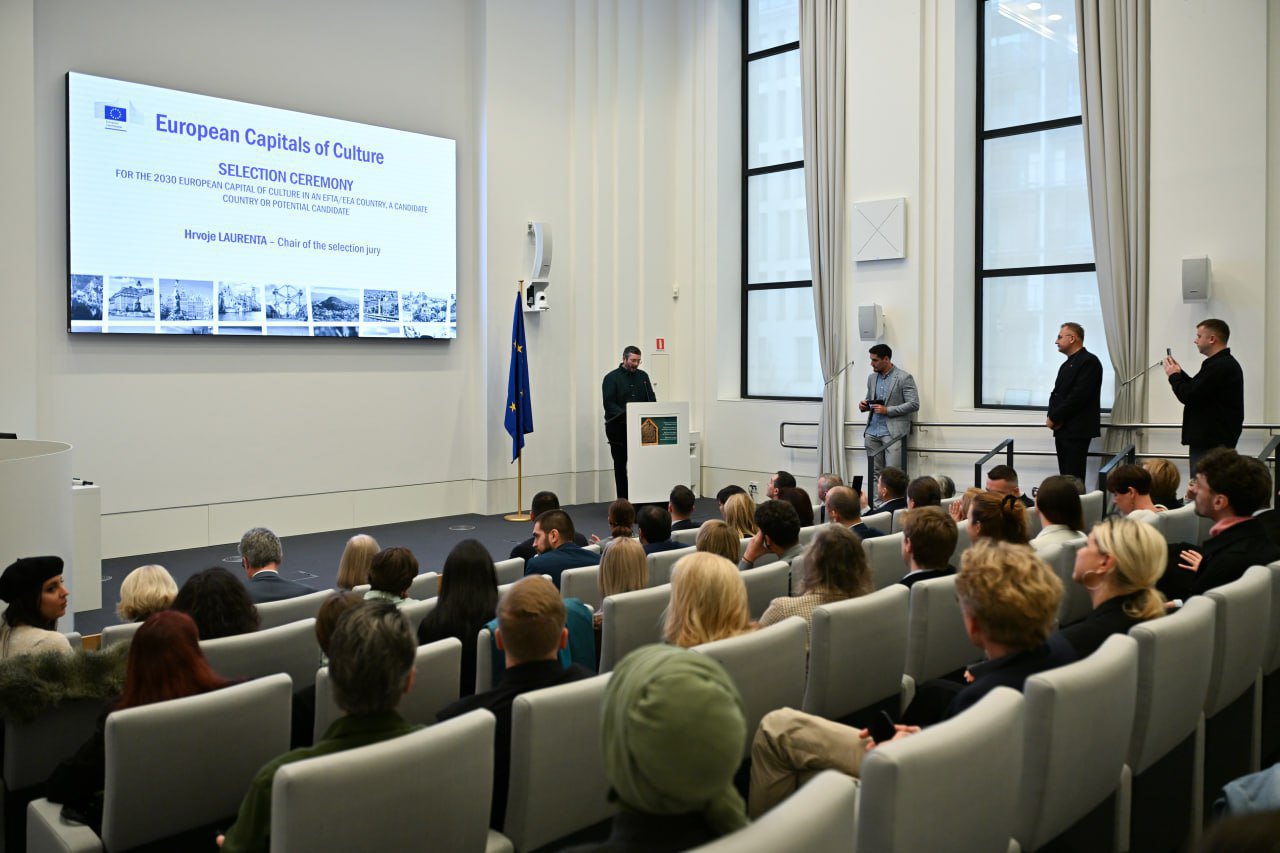
Who Pays for It
In the funding section of Lviv’s bid, 15% of the total budget was expected to come from the private sector, and 85% from public sources. The main investor was to be the city itself (€18 million), followed by the national government (€5 million) and the region (€3 million). Another €2 million was planned to be raised through various EU programmes.
Since Lviv did not win the European Capital of Culture title, financing may become a vulnerable point for implementing the proposed projects. Still, representatives of government institutions remain cautiously optimistic.
“We in Lviv understand the power of culture,” said Mayor Andriy Sadovyy. “We’ll support it no matter what. Titles come and go, but even without them we know we must be better tomorrow than we are today. No one will hand us anything — we must do it ourselves. In recent years, even during the war, the city’s spending on culture and education has been growing — that’s our response to today’s challenges.”
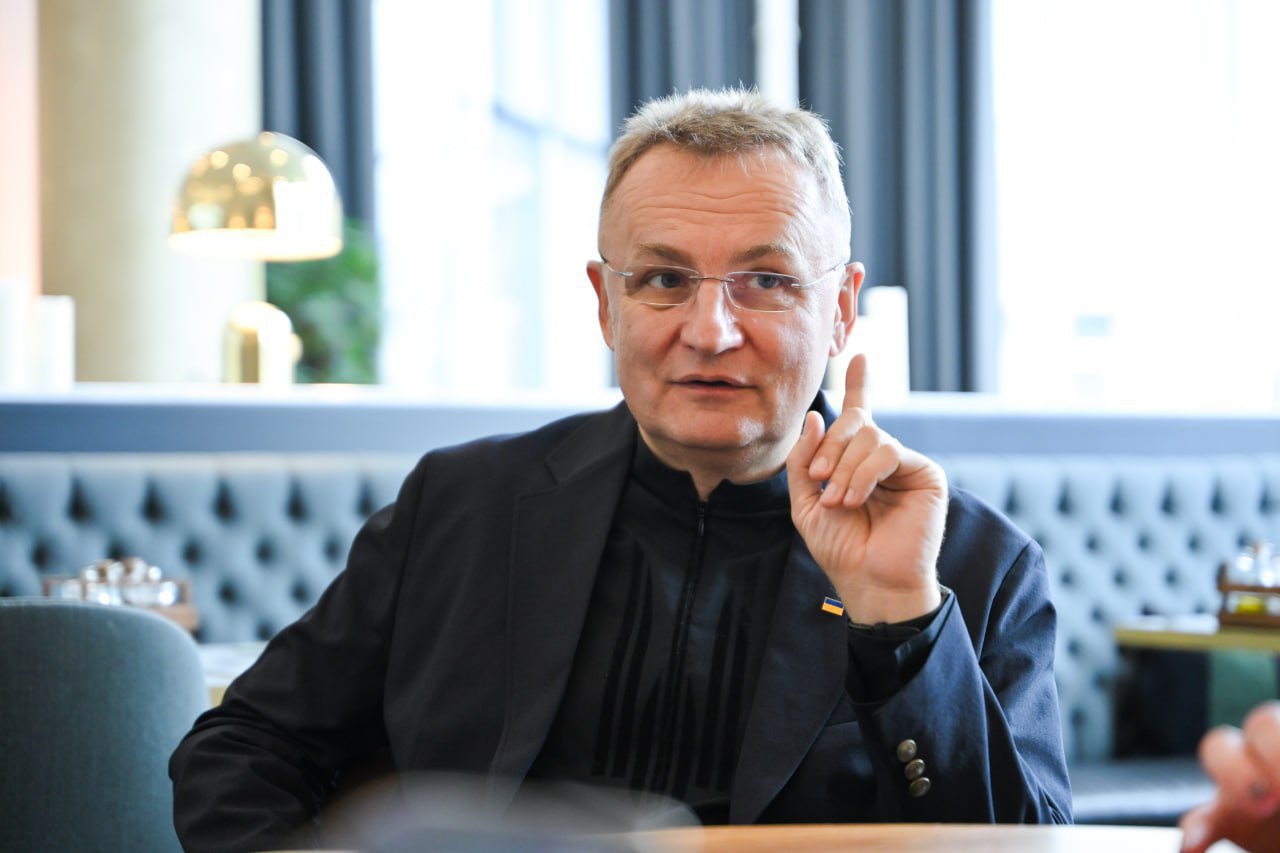
“Funding in the bid is diversified,” noted Deputy Minister of Culture Halyna Hryhorenko. “It involves contributions from the city, the region, and national budgets — through the Ukrainian Cultural Foundation and the Ukrainian Institute. There’s also participation from Lviv’s twin cities, businesses, and cultural institutions that can apply for grants and invest them in implementation. This gives confidence that the bid can still be realised — perhaps on a smaller scale, with fewer incoming tourists. But some of the proposed projects have already started and can absolutely continue.”
“Lviv is the Ukrainian city with the strongest international cultural connections,” explained Ukrainian Institute director Volodymyr Sheyko. “That was the foundation of Lviv’s bid for the European Capital of Culture title. Winning would have officially cemented Lviv’s place on Europe’s cultural map. But I don’t think the bid will be forgotten even without victory. The city will still carry it out on its own, since no special European funding for this title is available to countries outside the EU. So even if Lviv had won, it would have had to implement the programme independently, with support from partners and sponsors. That’s why I believe most of it will still come to life.”
Yuliya Khomchyn, director of the Institute for Cultural Strategy and head of the bid team, agrees with government officials — though she speaks more cautiously: “Of course, not winning is a worse outcome for us. But it still leaves room for optimism, because for me personally, and for many people who worked on the bid, it’s important to bring the ideas we put into it to life. The policies we proposed, the new institutions, the new approaches — they remain relevant regardless of the competition’s outcome. We can still realise all of it without the title. However, the European Capital of Culture status would have given a completely different level of visibility and ability to present the programme — to make it valuable not only within our environment, but also to show it to the world.”
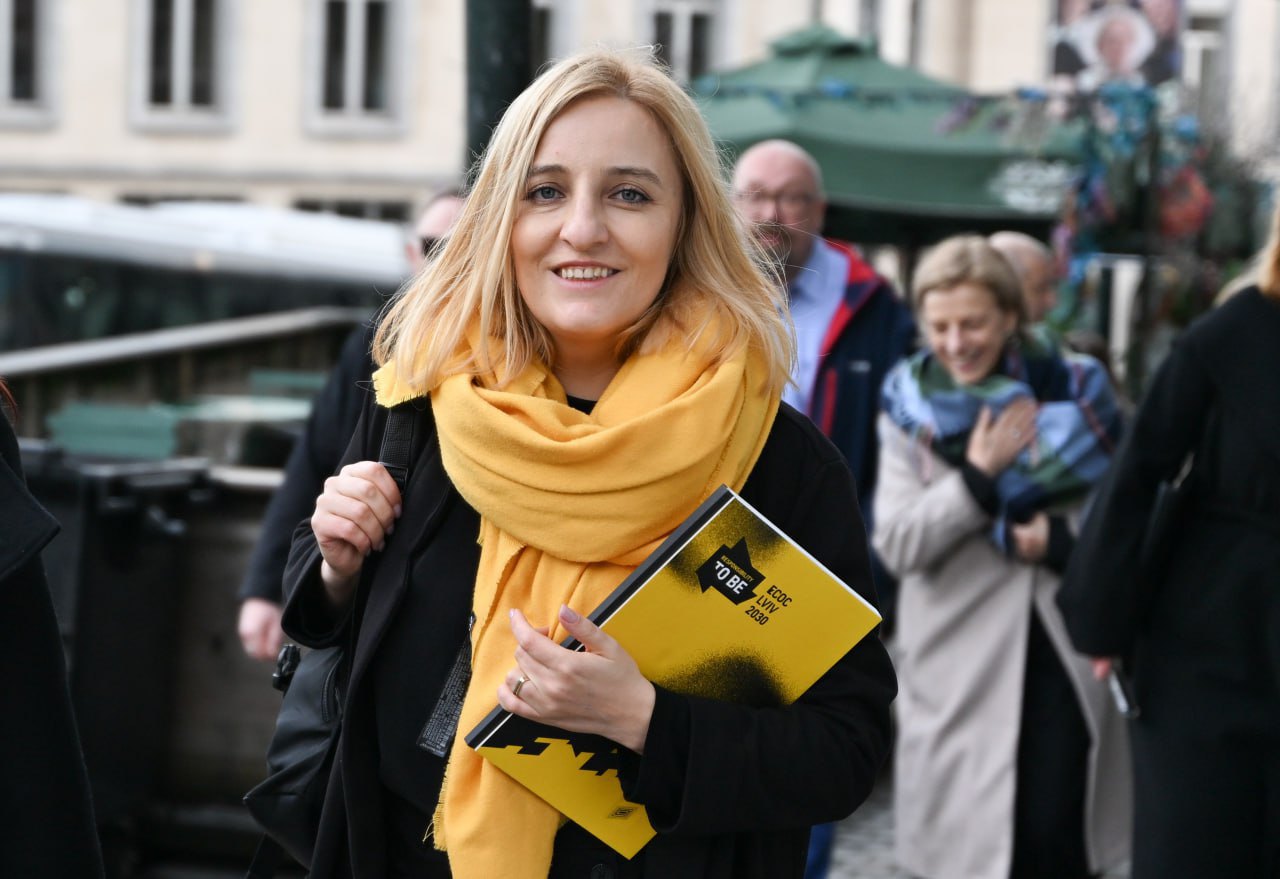
***
The idea of putting Lviv forward for the European Capital of Culture title emerged in the city long before it became a realistic possibility. It started within the Dzyga community — an important cultural hub in Lviv. In 2010, Lviv joined Lublin’s bid as a partner city. However, another Polish city, Wrocław, won, and Lviv still created a joint programme with it. In 2017, Lviv adopted its first Cultural Development Strategy; in 2018, it opened the Institute for Cultural Strategy to strengthen culture’s role in the city; this year, it approved a new Cultural Development Strategy up to 2035. Such systematic and consistent work with culture is rather exceptional in the Ukrainian context.
Throughout this time, the team that became the core of Lviv’s bid built partnerships with other European cities, participated in other candidates’ bids, and absorbed experience. The city spent more than 10 years preparing its own bid — and in that time, it went through a process that already transformed it.
The next opportunity for Ukraine to submit a bid will be in 2027, for the 2033 European Capital of Culture competition. Any city that decides to take this path will find it much easier, as Ukraine now has extensive expertise that Lviv’s team is ready to share. Therefore, if other players in the field are willing, this year’s “negative victory” for Lviv can very well become a starting point for further transformations on a national scale.
